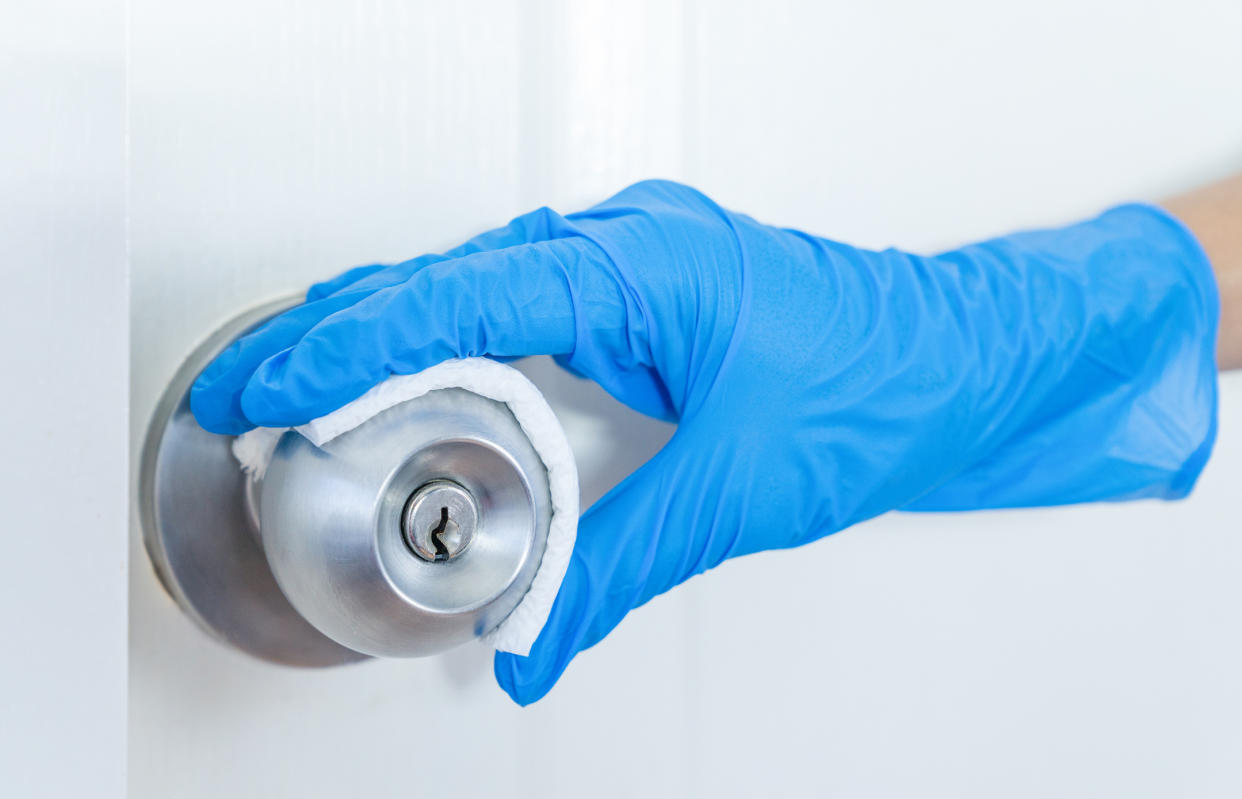CDC: Coronavirus mainly spreads through person-to-person contact and 'does not spread easily' on contaminated surfaces

Even before COVID-19 officially had a name, public health officials said the virus could be transmitted through infected respiratory droplets and by touching infected surfaces and then touching your nose, mouth, and possibly your eyes. So, people began snatching up face masks, wearing gloves, and ramping up hand hygiene to try to protect themselves.
While touching infected surfaces has always been part of the messaging on how the virus spreads, the Centers for Disease Control and Prevention (CDC) recently shifted its stance online. The CDC now says that COVID-19 spreads from person to person contact, and then lists touching infected surfaces under a section titled, "The virus does not spread easily in other ways." The CDC adds: “This is not thought to be the main way the virus spreads, but we are still learning more about this virus.” The language is a subtle change from the organization’s warning in early March, when it wrote simply that it “may be possible” to spread the virus through contaminated surfaces.
The CDC, which did not respond to Yahoo Life’s request for comment, still recommends that you wash your hands often with soap and water, and routinely clean and disinfect frequently touched surfaces to protect yourself and others from the virus.
The CDC’s lesser emphasis on infected surfaces as part of the spread of COVID-19 is slightly different from that of the World Health Organization (WHO). The WHO states online that “COVID-19 spreads primarily from person to person,” but adds that, “it can also spread if you touch contaminated objects and surfaces.” The WHO even breaks down for readers all of the commonly-touched surfaces to be wary of, like doorknobs, computers, elevator buttons, and pens, noting that “If you touch something contaminated and then touch your face… you might fall ill.”
So what does this mean, exactly?
Dr. Richard Watkins, an infectious disease physician in Akron, Ohio, and a professor of internal medicine at the Northeast Ohio Medical University, tells Yahoo Life that it’s important to keep in mind that COVID-19 is a new virus. “We are still learning about this new coronavirus —including how it spreads — and knowledge is increasing daily,” he says. With that, some guidance and information on the virus may change over time, he says.
There has been no new, major study to suggest that contaminated surfaces are less important in the spread of COVID-19, but epidemiological data (which is the method used to find the causes of health outcomes and diseases in populations) has simply found that person-to-person contact is more important, infectious disease expert Dr. Amesh A. Adalja, senior scholar at the Johns Hopkins Center for Health Security, tells Yahoo Life.
“Based on the epidemiology, we know that the main way this virus is infecting people is from direct contact with other infected people,” Adalja says. “Contaminated surfaces play some role, but it’s likely much smaller.” It also makes sense, too, he says: “This is a respiratory virus, and respiratory viruses largely spread through breathing in infected respiratory droplets.”
Concerns about contracting the virus from infected surfaces mostly stemmed from a study published in The New England Journal of Medicine in mid-March. That study found that SARS-CoV-2, the virus that causes COVID-19, can last on a variety of surfaces for anywhere from four hours (copper) to three days (plastic and stainless steel). What the study didn’t find was whether people could actually become infected from touching those surfaces. But, since the study’s release, people have been nervous about handling mail, groceries, and other high-touch surfaces like doorknobs.
But the CDC’s shift in guidance doesn’t mean you should stop being cautious with those things, Dr. William Schaffner, an infectious disease specialist and professor at the Vanderbilt University School of Medicine, tells Yahoo Life. “If I had to pick the things to pick an emphasis on to reduce the spread of COVID-19, it would still be social distancing, wearing masks, and practicing good hand hygiene,” he says. Schaffner compares the spread of COVID-19 to roadways. “Person-to-person contact is a highway, and the inanimate environment is a byway. Touching infected surfaces are little paths, but they don’t carry the big viral traffic,” he says.
Watkins agrees. “It might be possible to become infected after touching a surface that has the virus, then touching one's face,” he says. “That is why handwashing and avoiding touching one's face are important. However, this isn't the main way the virus is spread.”
For the latest coronavirus news and updates, follow along at https://news.yahoo.com/coronavirus. According to experts, people over 60 and those who are immunocompromised continue to be the most at risk. If you have questions, please reference the CDC’s and WHO’s resource guides.
How to maintain your physical and mental health during the pandemic
Taking care of a loved one with COVID-19? Here’s how to stay healthy
Q&A with Dr. Kavita Patel: How to keep your family safe and maintain your mental health
Read more from Yahoo Life
Want daily lifestyle and wellness news delivered to your inbox? Sign up here for Yahoo Life’s newsletter


